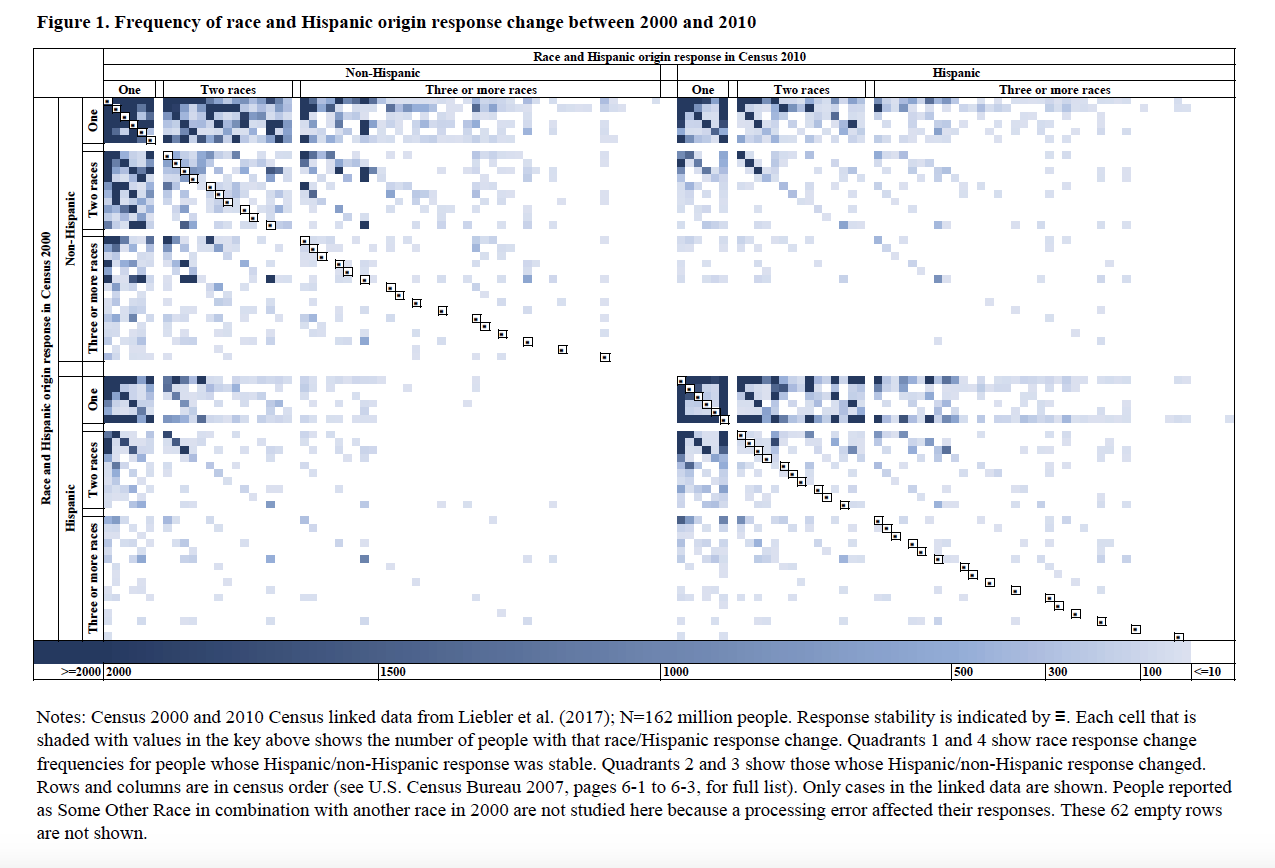Think race and ethnicity are permanent? Think againPosted in Articles, Asian Diaspora, Census/Demographics, Latino Studies, Media Archive, United States on 2017-07-14 17:26Z by Steven |
Think race and ethnicity are permanent? Think again
N-IUSSP: IUSSP’s online news magazine
International Union for the Scientific Study of Population
2017-06-26
Editorial Committee
Add something else to the list of things that seem simple but are actually complicated – the way someone reports their race or ethnicity. In a recently-published research article (Liebler et al. 2017), we used a large, unique linked dataset from two U.S. Censuses (2000 and 2010) to study who had the same race/ethnicity response in both years and whose response changed from one year to the next. With over 160 million cases covering all U.S. race and ethnicity groups we found that 6.1% of people in the (not-nationally-representative) data had a different race or ethnic response in 2010 than they did in 2000.
These response changes represent changes between the federally-defined major race groups (multiple responses allowed in both years): white, black or African American (“black” here), American Indian or Alaska Native (“American Indian”), Asian, Native Hawaiian or other Pacific Islander (“Pacific Islander”), or the residual category of Some Other Race. Or they were changes between the two defined ethnicity groups: Hispanic/Latino and non-Hispanic/Latino (“Hispanic” and “non-Hispanic”).We used strict case selection to assure that responses were given by the person or a household member (not allocated, imputed, gathered from a potentially unreliable source, or signaling an incorrect match)…
Read the entire article here.
